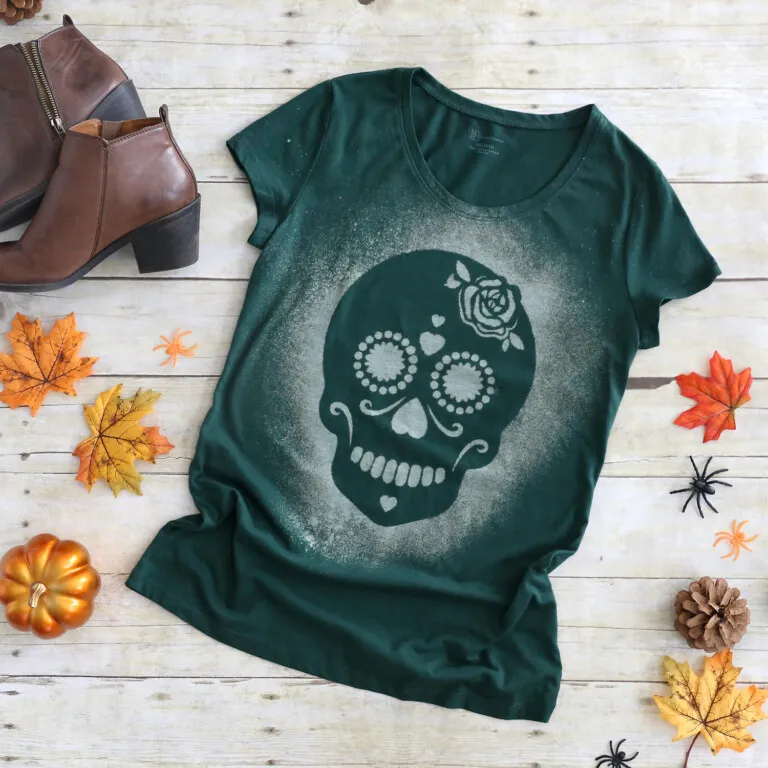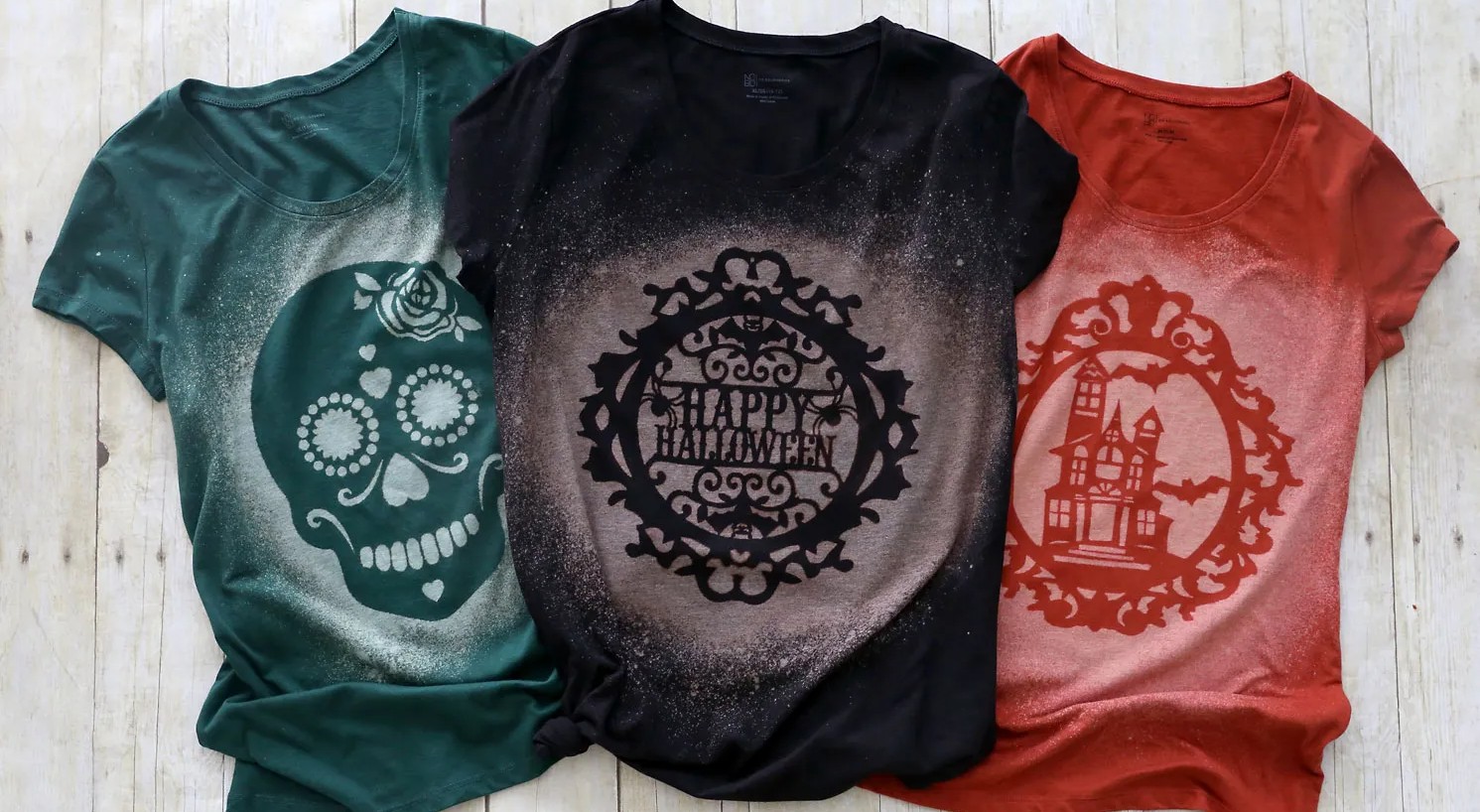If you want to get a little creative with the things you wear and want to bleach your shirts, one of the questions you need to consider is the best types of shirts for bleaching. This is not a review of different brands of t-shirts but rather a recommendation on the fabric type and color that is the best for bleaching.
I will answer this question and explore some of the top bleaching processes. This will help you to choose which shirt you need, and what methods are the best for your own application.
What Are The Best Shirts For Bleaching?
On the whole, the best shirts for bleaching are cotton or cotton blend t-shirts. Dark colors will show bleach better than light ones, so you should opt for these to make your designs stand out. Don’t try to bleach full polyester or other synthetic materials, as these will not bleach properly.
The best shirts for bleaching are usually cotton shirts. Many people recommend buying blended shirts because they are less likely to develop holes, but you can opt for pure cotton ones if you bleach them with care. Shirts that bleach best include:
- 100 percent cotton shirts
- Shirts with a high cotton percentage and some polyester
- Ringspun cotton t-shirts
- Dark-colored t-shirts
Before deciding to bleach a shirt, you will need to check what the cotton content is. Fully polyester shirts will not bleach well because of how the fibers are designed. There is also a high chance that the bleach will react badly with the fibers and cause them to degrade.
If it has been mixed with cotton, you can bleach a polyester shirt because the bleach will affect the cotton parts and strip some of the colors out of these fibers. However, you should be aware that fully cotton shirts will bleach more effectively and may have a better appearance because bleach can affect all fibers.
One of our favorite brands for bleaching are Bella 3001 ringspun or Gildan 5000 cotton tees. These will take bleach extremely well, and if you choose a dark-colored shirt, you can get some great, striking designs. Light fabrics will not show bleach well, so avoid yellow, cream, light blue, pale pink, or white shirts.
What Are The Different Bleaching Processes?
There are many different ways to bleach a t-shirt, but you should always take safety precautions to protect your eyes and skin. Work in a well-ventilated space and wear old clothes so that it won’t matter if you accidentally get bleach on them.
The Spray Method
One of the most common methods for bleaching a shirt involves setting a stencil in the desired position on the shirt, then adding chlorine bleach to a spray bottle and spraying it onto the stencil.
The stencil will protect the fabric beneath it, while the other fibers will come into contact with the bleach and the bleach will strip out the color. Make sure you put some cardboard inside the shirt to stop the bleach from soaking through and affecting the fibers on the back of the shirt.
You will then need to rinse the shirt thoroughly and run it through a washing machine (with no other clothes) to remove the excess bleach.
We highly recommend visiting Autumn’s DIY tutorial showing how to use stencils to bleach t-shirts. She shows how to create stenciled bleach t-shirts that look amazing: DIY Halloween Bleach Dyed T-shirts

The Tie Dye Method
You can also create a reverse tie-dye effect using the bleaching process. Again, this works best on cotton shirts. You will need a brightly colored shirt. Tie up parts of it with rubber bands to protect some of the fabric, wrapping these areas tightly in the rubber band. Add 1 part bleach and 1 part water to a bowl.
Submerge the shirt in the solution and wait for around 10 minutes, and then take the shirt out and rinse it. Check whether you are happy with the bleached area (or areas) and then wash the shirt in your washing machine, away from other clothing.
The Flick Method
You will need an open space for this as the bleach will be less controlled. Place a brightly colored shirt on a work surface and mix 1 part bleach with 1 part water. Wear gloves and eye protection.
Take a brush with stiff bristles and use this to flick the bleach at the shirt in a random pattern, moving your hand around so that the bleach will hit different parts of the fabric. Remember to add cardboard to the shirt if you only want the design on one side.
When you have finished, you should again rinse and wash the shirt to remove the bleach.
Conclusion
The best shirts for bleaching are those with a high cotton count, or 100% cotton. Always opt for bright colors so your designs will be vivid, and don’t try to bleach shirts that contain a lot of polyester or other synthetic fibers.
Bryan E. Robinson is the former owner of TshirtGrowth. He has sold t-shirts since 2006 through dropshipping, screen printing, vinyl printing, DTG, Print on Demand, and more. Bryan has created his own t-shirt designs through Photoshop, Canva, and other platforms, as well as worked with freelancers to create many of his designs. Besides t-shirts, Bryan has over 18 years of experience in online marketing with eCommerce, B2B SaaS, B2C products, and more.


